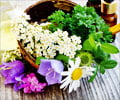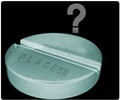Learn how to reduce the shaking caused by anxiety with tips from SUN Behavioral Delaware. Manage symptoms through deep breathing, meditation, exercise, and more.
- Anxiety is a natural survival mechanism, but high anxiety levels can cause physical symptoms like tremors and dry mouth
- Techniques like deep breathing, sensory meditation, and regular exercise can help manage anxiety tremors
- Prioritizing sleep and hydration is also important for managing anxiety symptoms
Understanding Anxiety: A Natural Survival Mechanism
Anxiety, according to the institute, is a built-in survival mechanism dating back to "caveman" times. Dangerous animals and weather were employed to instill fear and stimulate the fight-or-flight reaction in people. It saved people's lives. Though humans no longer need to hunt or fight to survive, anxiety is still an instinct.Fight-or-Flight Response and its Physical Symptoms
Healthy anxiety levels versus high anxiety levels are frequently associated with vulnerability to the fight-or-flight response. When the body detects danger, this response prepares it to run, activating the sympathetic nervous system and producing physical stress. Consider which symptoms are prompted by a fight-or-flight response. Tremors, or shaking, are physical symptoms that people who suffer from anxiety may feel. Fortunately, they are manageable.How Does Anxiety Affect the Body?
Panic attacks might cause dry mouth and eye difficulties. Stress diverts energy to muscles and halts digestion, resulting in a dry mouth in tense situations. When the brain detects a threat, it sends blood to the muscles in preparation for a flight-or-fight response, which generates dread, anxiety, and panic. Because the muscles are being prepared to run due to the activation of the stress response, regular anxiety often causes muscle tension as well.During fight-or-flight, adrenaline is released, creating alertness and physical symptoms such as tremors. Sweating keeps a person cool and alert in times of danger, although sweaty palms may accompany anxiousness due to a change in breathing rate. Fear causes people to breathe quickly and shallowly, giving the impression that they are not getting enough oxygen.
Anxiety tremors interfere with sleep and comfort. Fatigue and loss of attention may result if left untreated owing to lost energy. Severe tremors might restrict fun activities and exacerbate anxiety.
Deep Breathing: A Simple Exercise for Tremor Relief
There are techniques to lessen anxiety tremors, and treatment and medication may be beneficial. Propranolol lowers anxiety-related tremors, and deep breathing can also assist to slow the pulse rate. Deep breathing relaxes the neurological system, reduces the heart rate, and boosts blood flow to the brain. A simple exercise like inhaling for 4 seconds, holding for 4 seconds, and then expelling for 8 seconds can bring relief. A longer out-breath (than an in-breath) relaxes the body and lowers the pulse rate.Sensory Meditation: Grounding Techniques for Anxiety
Similarly, sensory meditation can aid in nervous system regulation. Sensory meditation can help with anxiety alleviation by grounding you and signaling safety to your brain. Observing space in the mouth, feeling the breeze on the face, heaviness in the legs, and stomach rising and falling with breath are all examples of sensory meditation.Exercise, Hydration, and Rest: Preventing and Managing Anxiety Tremors
Regular exercise also helps to keep anxiety tremors at bay. Exercise activates dopamine production and releases latent energy, which can be as powerful as antidepressants. In a related vein, the SUN recommends that individuals drink plenty of water because dehydration can trigger tremors. Rest can help you think more clearly and lessen racing thoughts, which are common symptoms of anxiety. Prioritizing sleep is always a good idea.SUN recommended that everyone get 7-8 hours of sleep per night, especially if they are anxious. It lets the body and mind recover and prepare for the day ahead. Sleep deprivation raises cortisol levels, causing the fight-or-flight response.
Source-Medindia
















